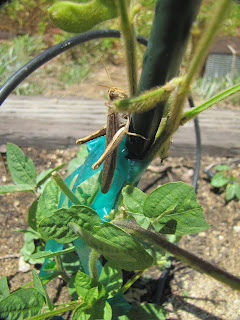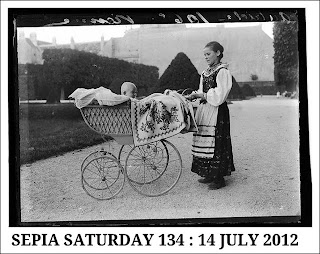The Health Fairy was a lovely almost angelic looking young woman and certainly seems captivating to her young audience. The favorite fairy of my youth was the scantily clad show-girly Tinkerbell who some claim erroneously was modeled after Marilyn Monroe. Even though she seemed a bit cross-eyed, she was everything young girls wished to be: beautiful, sparkly, good, wise, fun and she could fly away if anything bothered her too much.
I wonder if this Health Fairy was delivering messages about diet. In the twenties America had just emerged from a period of diet madness where great numbers of people believed that consumption of the wrong foods would cause moral decay. One Reverend Sylvester Graham believed for instance that ketchup and mustard would cause insanity and the consumption of meat led to hormonal overload causing men to take advantage of "pliant" women. Perhaps he was right! All the current ills of our society could be traced back to the twenties when hamburgers as we know them began to be popular.
Horace Fletcher, a charlatan, with a harmless but inconvenient theory convinced the world that each bite should be chewed 32 times. It slowed us all down and couldn't be all bad. Despite advances in nutrition education, diet madness still grips us. We regularly fall prey to ridiculous diet fads with no scientific evidence to support them such as the 3-day diet, the cabbage soup diet, the negative calorie diet, the Beverly Hills diet, the Zone diet and various combining diets.
Perhaps the Health Fairy was educating the children about the spurious health claims being made by food companies such as Quaker Oats claiming to curb nervousness and constipation, Fleischmann's yeast to sooth frayed nerves and loosen the bowels and the "Chicken Dinner" candy bars so called because it provided satiety, like a chicken dinner.
Worrisome also to the nutritionists of the day, the twenties were the golden age of candy bars some of which are still around: Baby Ruth, Milky Way, Butterfingers and Oh Henry, only one cent!
Cooler sweets hitting the market included Good Humor bars, Eskimo Pies and Pospsicles. The grocery store was laden with temptation and danger. I guess "Yea Bo" was some sort of cool address form, like today's "Hey Dude". `
The Health Fairy of today would probably have to look like a very buff version of Lady Gaga (dressed in thrift store clothing - she'd have to give up her meat dress) in order to hold the kid's attention for any length of time. Her magic wand would be some kind of electronic stylus or perhaps the magic wand patented by Microsoft a few years ago. She would likely be a vegetarian juicer with no personal possessions (except an Iphone), intent on saving the planet, eschewing energy consumption by eating raw and riding her bicycle to the job. Whatever her message it would be conveyed by rapping and she'd have a nose ring and be covered with tattoos of healthy fruits and vegetables. Oh yes, and they'd have to change that name!!!
I wonder if this Health Fairy was delivering messages about diet. In the twenties America had just emerged from a period of diet madness where great numbers of people believed that consumption of the wrong foods would cause moral decay. One Reverend Sylvester Graham believed for instance that ketchup and mustard would cause insanity and the consumption of meat led to hormonal overload causing men to take advantage of "pliant" women. Perhaps he was right! All the current ills of our society could be traced back to the twenties when hamburgers as we know them began to be popular.
Horace Fletcher, a charlatan, with a harmless but inconvenient theory convinced the world that each bite should be chewed 32 times. It slowed us all down and couldn't be all bad. Despite advances in nutrition education, diet madness still grips us. We regularly fall prey to ridiculous diet fads with no scientific evidence to support them such as the 3-day diet, the cabbage soup diet, the negative calorie diet, the Beverly Hills diet, the Zone diet and various combining diets.
Perhaps the Health Fairy was educating the children about the spurious health claims being made by food companies such as Quaker Oats claiming to curb nervousness and constipation, Fleischmann's yeast to sooth frayed nerves and loosen the bowels and the "Chicken Dinner" candy bars so called because it provided satiety, like a chicken dinner.
Worrisome also to the nutritionists of the day, the twenties were the golden age of candy bars some of which are still around: Baby Ruth, Milky Way, Butterfingers and Oh Henry, only one cent!
Cooler sweets hitting the market included Good Humor bars, Eskimo Pies and Pospsicles. The grocery store was laden with temptation and danger. I guess "Yea Bo" was some sort of cool address form, like today's "Hey Dude". `
The Health Fairy of today would probably have to look like a very buff version of Lady Gaga (dressed in thrift store clothing - she'd have to give up her meat dress) in order to hold the kid's attention for any length of time. Her magic wand would be some kind of electronic stylus or perhaps the magic wand patented by Microsoft a few years ago. She would likely be a vegetarian juicer with no personal possessions (except an Iphone), intent on saving the planet, eschewing energy consumption by eating raw and riding her bicycle to the job. Whatever her message it would be conveyed by rapping and she'd have a nose ring and be covered with tattoos of healthy fruits and vegetables. Oh yes, and they'd have to change that name!!!































